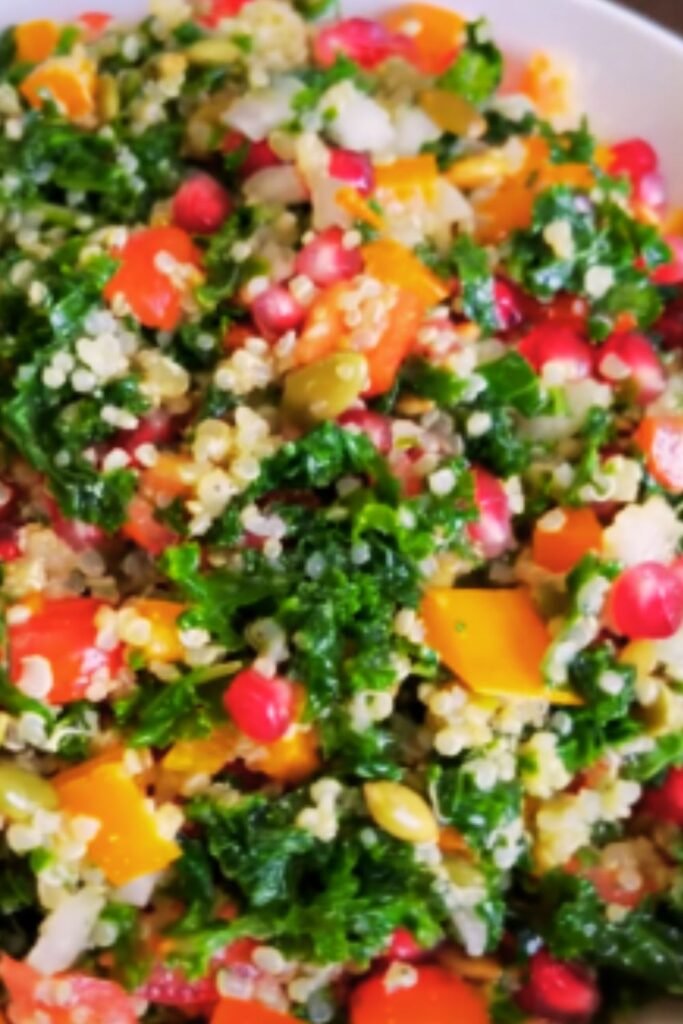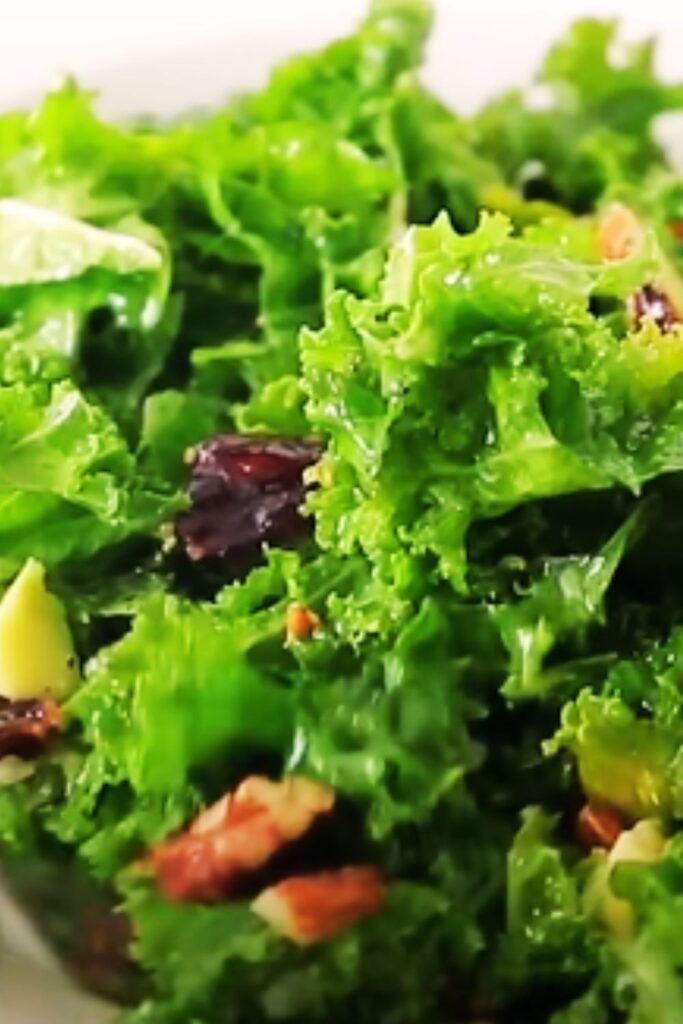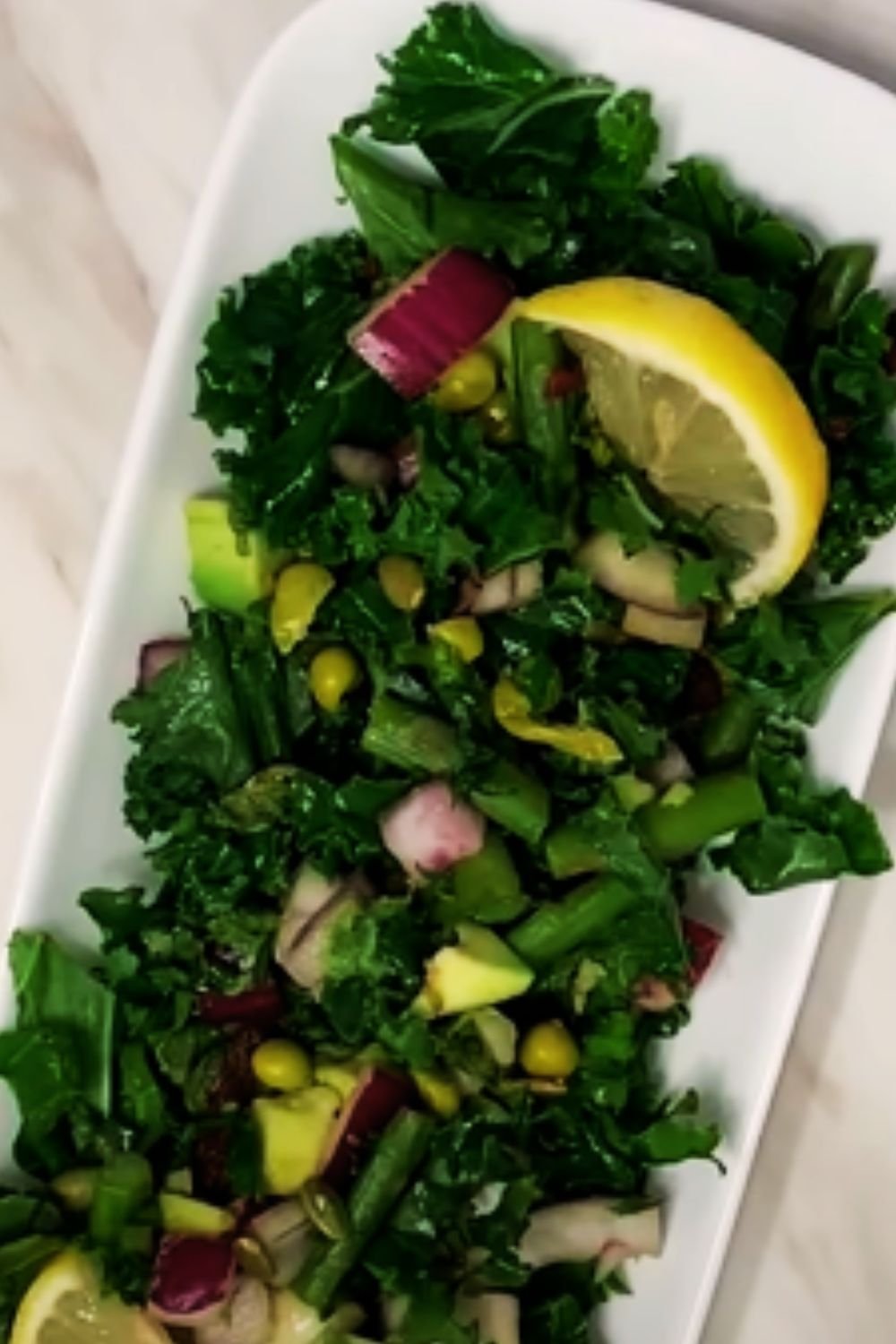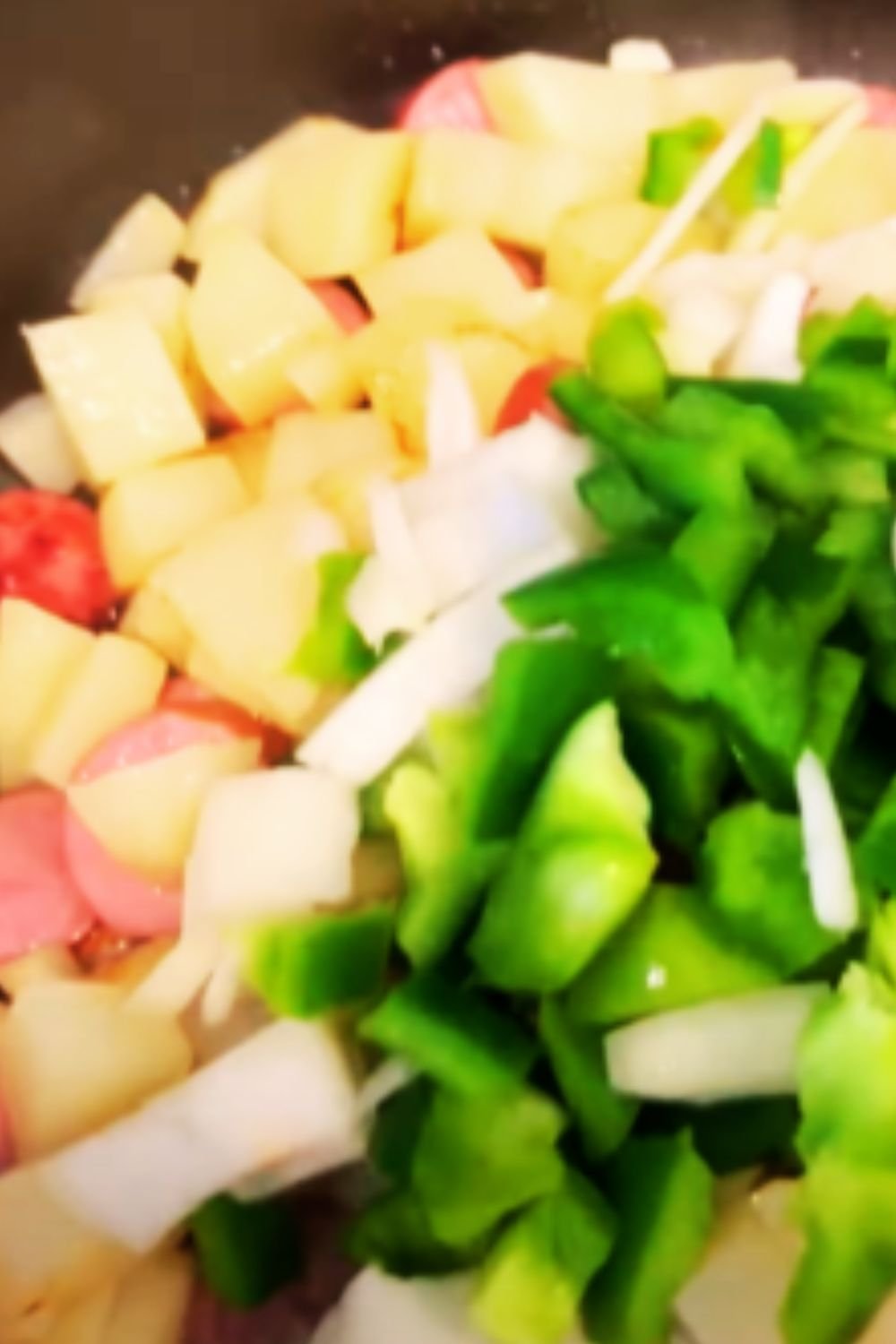Growing up in a household where vegetables were merely an afterthought, I never imagined I’d one day be writing passionately about kale. Yet here I am, completely converted to this leafy green superfood that has transformed my salads and my approach to healthy eating. The journey from kale skeptic to kale enthusiast wasn’t immediate, but once I discovered the proper techniques for preparing this nutritional powerhouse, there was no turning back.
Kale has earned its superfood status for good reason, but let’s be honest—raw kale can be tough, bitter, and downright unpleasant if not prepared correctly. The good news? With the right approach, you can transform this fibrous leafy green into a delicious salad base that’s both satisfying and nutritious.
In this comprehensive guide, I’ll walk you through everything you need to know about preparing kale for salads—from selecting the freshest leaves at the market to serving up a perfectly dressed kale salad that will impress even the most devoted kale critics. Whether you’re a kale novice or looking to refine your techniques, you’ll find valuable tips to elevate your kale game.
Selecting the Perfect Kale
Before you can prepare the perfect kale salad, you need to start with quality ingredients. Not all kale is created equal, and selecting the right variety and quality can make a significant difference in your final dish.
Common Kale Varieties and Their Characteristics
Kale comes in several varieties, each with distinct characteristics that affect texture, flavor, and ideal preparation methods:
| Variety | Appearance | Flavor Profile | Best Uses in Salads | Texture When Raw |
|---|---|---|---|---|
| Curly Kale | Ruffled, curly edges with blue-green leaves | Robust, slightly peppery flavor with a bitter edge | Great for hearty salads; holds dressings well in its curls | Tough and fibrous; benefits greatly from massage technique |
| Lacinato (Dinosaur/Tuscan) Kale | Dark blue-green, narrow leaves with embossed texture | Earthy, slightly sweeter and more delicate than curly kale | Ideal for softer salads; thin strips work wonderfully | Less tough than curly, but still needs proper preparation |
| Red Russian Kale | Purple stems with flat, toothed-edge leaves | Sweeter, more tender with a peppery finish | Excellent for mixed green salads; adds color contrast | Naturally more tender than other varieties |
| Baby Kale | Small, young leaves of any variety | Milder flavor, minimal bitterness | Perfect for delicate salads; can be used without special preparation | Naturally tender, requires little to no massage |
| Ornamental (Salad Savoy) Kale | Colorful, often purple or white | Milder than curly kale, slightly sweeter | Adds beautiful color contrast to salads | Relatively tender compared to mature curly kale |
For beginners, I recommend starting with Lacinato kale (also known as dinosaur or Tuscan kale) since it’s naturally more tender than curly varieties, or baby kale, which requires minimal preparation.
How to Select Fresh Kale at the Market
When shopping for kale, keep these criteria in mind:
- Color: Look for vibrant, deeply colored leaves without yellowing or browning edges. The deeper the color, the more nutrients present.
- Firmness: Leaves should be firm and crisp, not wilted or limp.
- Stems: Stems should be moist and firm, not woody or dried out.
- Bunches: Choose compact bunches with small to medium-sized leaves, which are generally more tender than larger leaves.
- Seasonality: While available year-round, kale is sweetest after the first frost in fall and winter.

I once made the mistake of picking out the largest leaves I could find, thinking I was getting more bang for my buck. The resulting salad was so tough and bitter that it nearly ended my kale experimentation altogether! Size matters with kale—smaller to medium leaves are typically more tender and pleasant.
Essential Preparation Techniques
Now that you’ve selected your kale, let’s dive into the crucial preparation techniques that will transform it from tough to tender.
Washing Kale Properly
Kale grows close to the ground and can harbor dirt, debris, and occasionally tiny insects in its curly crevices. Thorough cleaning is essential:
- Fill a large bowl or clean sink with cold water.
- Submerge the kale leaves completely, agitating gently to dislodge dirt.
- Let the kale soak for about 5 minutes—dirt will sink to the bottom.
- Lift the kale out of the water (rather than draining the water through the kale).
- For particularly dirty kale, repeat the process with fresh water.
- Pat dry with clean kitchen towels or use a salad spinner.
Pro tip: Don’t wash kale until you’re ready to use it—excess moisture speeds up deterioration during storage.
Removing the Stems and Ribs
The stems and center ribs of kale are exceptionally tough and fibrous—removing them is non-negotiable for a pleasant salad experience:
Method 1: The Strip Technique
- Hold the stem end with one hand.
- With your other hand, grip the leaf at the stem’s base.
- Pull your hand upward along the stem, stripping the leaf away in one smooth motion.
Method 2: The Fold and Cut Method
- Fold the leaf in half along the center rib.
- Position your knife parallel to the stem and cut the leafy portions away.
For baby kale or very tender varieties, you may only need to remove the thickest part of the stem at the bottom of the leaf.
Properly Chopping Kale for Salads
The way you cut kale significantly impacts the eating experience:
- Chiffonade (thin ribbons): Stack several de-stemmed leaves, roll them tightly, then slice thinly across the roll to create fine ribbons—ideal for tender, easy-to-eat salads.
- Small squares: After de-stemming, fold or stack leaves and cut into small, manageable squares (about 1-inch or smaller).
- Torn pieces: Tear leaves into bite-sized pieces by hand—some chefs prefer this method as it creates natural breaking points rather than crushing cells with a knife.
I’ve experimented with all these cutting techniques and found that the chiffonade method consistently produces the most restaurant-worthy kale salads. The thin ribbons provide optimal surface area for absorbing dressings and make each bite more manageable.
The Game-Changing Massage Technique
Here’s where the magic happens—massaging kale breaks down its tough cellular structure, making it significantly more tender and palatable:
- Place your chopped kale in a large bowl.
- Drizzle with a small amount of olive oil and a pinch of salt.
- With clean hands, grab handfuls of the kale and literally massage it, similar to kneading dough.
- Continue for 2-5 minutes until you notice the kale darkening in color, reducing in volume, and becoming silky and tender.
The transformation is remarkable—you’ll feel the leaves soften under your hands, and they’ll take on a glossy appearance. The first time I tried this technique, I was genuinely amazed at how dramatically it improved both texture and flavor, reducing bitterness and creating a much more pleasant eating experience.
| Massaging Duration | Effect on Texture | Best For |
|---|---|---|
| 1-2 minutes | Slightly softened, maintains structure | Heartier salads that will sit for a while |
| 3-5 minutes | Noticeably tender, silky texture | Most kale salads, optimal balance |
| 5+ minutes | Very soft, approaching cooked texture | When maximum tenderness is desired |

Flavor-Enhancing Pre-Treatments
Beyond the basic preparation techniques, several pre-treatments can further enhance kale’s flavor profile and texture.
Tenderizing with Acid
Acids like lemon juice, vinegar, or yogurt help break down kale’s tough fibers through a process similar to cooking:
- After massaging, toss kale with 1-2 tablespoons of fresh lemon juice or your preferred acidic ingredient.
- Let it rest for at least 15 minutes, or up to several hours in the refrigerator.
This technique is particularly effective when combined with the massage method, creating ultra-tender kale with bright flavor notes.
The Salt Rub Method
Another effective tenderizing technique involves salt:
- After removing stems and chopping, sprinkle kale with about 1/2 teaspoon of kosher salt per bunch.
- Rub the salt into the leaves vigorously for 1-2 minutes.
- Let the salted kale rest for 5-10 minutes.
- Rinse thoroughly to remove excess salt, then dry well.
This method draws out bitter compounds while breaking down tough fibers. I find it particularly useful for curly kale varieties that tend to be more fibrous and bitter.
Blanching Technique for Extra Tenderness
For those who find even massaged kale too tough, a quick blanch can work wonders:
- Bring a large pot of salted water to a boil.
- Prepare an ice bath in a separate bowl.
- Submerge chopped kale in boiling water for just 15-30 seconds.
- Immediately transfer to the ice bath to stop cooking.
- Thoroughly dry the blanched kale before using in your salad.
This flash-cooking technique preserves nutrients while significantly softening the leaves. It’s my go-to method when serving kale salads to guests who are tentative about raw greens.
Creating Balanced Kale Salad Dressings
The right dressing makes all the difference in a kale salad. Unlike delicate lettuces, kale’s robust nature can stand up to bold, flavorful dressings.
Base Dressing Formulas for Kale
These ratios provide starting points for creating balanced dressings that complement kale’s unique characteristics:
| Dressing Type | Base Formula | Best Paired With | Notes |
|---|---|---|---|
| Vinaigrette | 3 parts oil : 1 part acid + seasonings | Fruity elements, nuts, hard cheeses | Classic option that penetrates kale fibers effectively |
| Creamy | 2 parts mayo/yogurt : 1 part acid + seasonings | Robust additions like roasted vegetables, bacon | Coats kale thoroughly for rich flavor in every bite |
| Tahini-Based | 2 parts tahini : 1 part acid : 1 part water + seasonings | Mediterranean ingredients, roasted vegetables | Creates a nutty, satisfying coating that adheres well |
| Asian-Inspired | 2 parts oil : 1 part soy sauce : 1 part rice vinegar + seasonings | Sesame seeds, edamame, mandarin oranges | Offers umami depth that counteracts any remaining bitterness |
Ideal Dressing Components for Kale
Certain ingredients pair exceptionally well with kale’s earthy flavor profile:
- Acids: Lemon juice, apple cider vinegar, balsamic vinegar
- Oils: Extra virgin olive oil, avocado oil, walnut oil
- Sweeteners: Honey, maple syrup, agave (balances kale’s natural bitterness)
- Aromatics: Garlic, shallots, ginger
- Umami boosters: Nutritional yeast, miso paste, soy sauce
- Nuts/Seeds: Tahini, nut butters (add richness and body)
My personal favorite dressing combines olive oil, lemon juice, Dijon mustard, a touch of honey, and finely grated garlic—the perfect balance of acidity, sweetness, and depth that transforms kale into something truly crave-worthy.
Advanced Tip: Dressing Marination
For extra-flavorful kale salads:
- Prepare your dressing and massage it directly into the kale.
- Refrigerate the dressed kale for 30 minutes to several hours.
- Add remaining salad ingredients just before serving.
This technique allows the kale to fully absorb the dressing flavors while maintaining the freshness of other ingredients. It’s also ideal for meal prep, as dressed kale often tastes better the next day, unlike most leafy greens that would wilt.
Complementary Ingredients for Balanced Kale Salads
Creating a truly satisfying kale salad requires thoughtful pairing of ingredients that complement kale’s unique texture and flavor profile.
Texture Contrast Elements
Kale’s hearty texture benefits from ingredients that provide contrast:
- Creamy elements: Avocado, soft cheeses (goat cheese, feta), soft-boiled eggs
- Crunchy additions: Toasted nuts, seeds, crisp apple slices, croutons
- Chewy components: Dried fruits, roasted chickpeas, ancient grains
Flavor Profile Enhancers
These ingredients help balance kale’s sometimes assertive flavor:
- Sweet elements: Fresh or dried fruits, roasted sweet potatoes or squash
- Salty components: Feta, parmesan, olives, capers
- Umami boosters: Roasted mushrooms, sun-dried tomatoes, aged cheeses
- Bright/acidic notes: Citrus segments, pickled onions, fresh herbs
I’ve found that the most successful kale salads include at least one element from each texture category and at least two contrasting flavor profiles. This creates balance and complexity that elevates kale from merely nutritious to genuinely delicious.

Storage and Make-Ahead Tips
One of kale’s unique advantages is its staying power—properly prepared kale salads can maintain their integrity far longer than traditional lettuce-based salads.
Storing Prepared Kale
Once you’ve washed, de-stemmed, and chopped your kale:
- Thoroughly dry the leaves (excess moisture accelerates spoilage).
- Store in an airtight container lined with paper towels.
- Keep refrigerated for up to 5 days.
For maximum freshness, place a paper towel on top of the kale before sealing the container to absorb any remaining moisture.
Make-Ahead Kale Salad Strategies
Unlike delicate greens, properly prepared kale can be dressed ahead of time without wilting:
- Partially dressed storage: Massage kale with olive oil and salt up to 3 days ahead, adding remaining dressing components before serving.
- Fully dressed storage: Complete kale salads (without delicate herbs or avocado) can be refrigerated for 24-48 hours, often improving in flavor.
- Component preparation: Store prepped kale, dressing, and add-ins separately for quick assembly throughout the week.
I typically prepare a large batch of massaged kale on Sunday evenings, storing it with just olive oil and salt. This gives me a ready base for quick salads throughout the busy workweek—I just add dressing and toppings for nearly instant healthy meals.
Five Signature Kale Salad Foundations
Here are five versatile kale salad foundations to get you started:
1. Mediterranean Kale Salad
Base: Lacinato kale, thinly sliced Dressing: Lemon-garlic vinaigrette Key components: Cherry tomatoes, cucumber, red onion, kalamata olives, feta cheese Protein options: Chickpeas, grilled chicken, or roasted salmon
2. Autumn Harvest Kale Salad
Base: Curly kale, massaged well Dressing: Apple cider vinaigrette with maple Key components: Roasted butternut squash, dried cranberries, toasted pecans Protein options: Roasted turkey, quinoa, or lentils
3. Asian-Inspired Sesame Kale
Base: Mixed kale varieties, chiffonade cut Dressing: Sesame-ginger with rice vinegar Key components: Shredded carrots, edamame, mandarin oranges, toasted sesame seeds Protein options: Marinated tofu, grilled shrimp, or edamame
4. Southwest Kale Power Bowl
Base: Curly kale, massaged with lime juice Dressing: Avocado-cilantro dressing Key components: Black beans, corn, diced bell peppers, cherry tomatoes Protein options: Grilled chicken, black beans, or tempeh
5. Classic Caesar Kale Salad
Base: Lacinato kale, thinly sliced Dressing: Creamy Caesar (yogurt-based) Key components: Sourdough croutons, parmesan cheese, cherry tomatoes Protein options: Grilled chicken, white beans, or hard-boiled eggs
Troubleshooting Common Kale Salad Issues
Even with proper techniques, challenges can arise. Here are solutions to common kale salad problems:
| Problem | Likely Cause | Solution |
|---|---|---|
| Kale remains too tough | Insufficient massage, mature leaves | Massage longer, add acid treatment, or try flash-blanching |
| Overly bitter flavor | Mature kale, inadequate preparation | Add sweeteners to dressing, increase massage time, use salt-rubbing method |
| Salad becomes soggy | Excess water on leaves, over-marination | Ensure thorough drying, add absorbent ingredients like grains |
| Too much volume | Natural characteristic of raw kale | Massage longer to reduce volume, or embrace the abundance |
| Unpleasant texture in mouth | Pieces too large | Cut into smaller, more uniform pieces |
Nutritional Benefits of Kale
Understanding kale’s impressive nutritional profile can provide extra motivation for incorporating it into your diet:
| Nutrient | Amount per 1 cup raw kale | % Daily Value | Benefits |
|---|---|---|---|
| Vitamin K | 547 mcg | 684% | Bone health, blood clotting |
| Vitamin A | 10,302 IU | 206% | Vision, immune function, skin health |
| Vitamin C | 80.4 mg | 134% | Immune support, collagen production |
| Manganese | 0.5 mg | 26% | Metabolism, bone development |
| Calcium | 90.5 mg | 9% | Bone health, muscle function |
| Potassium | 299 mg | 9% | Blood pressure regulation, fluid balance |
| Fiber | 1.3 g | 5% | Digestive health, satiety |
Kale’s extraordinary nutrient density makes it one of the most beneficial greens you can add to your diet. What’s more, many of these nutrients become more bioavailable when the kale is properly prepared using the techniques described in this guide.
Q&A: Common Questions About Kale Preparation
Q: Can I use the stems of kale in my salads? While the stems are edible, they’re typically too tough for raw consumption. Instead, save them for stir-fries, soups, or smoothies where they can be broken down by cooking or blending.
Q: How can I tell if my kale has gone bad? Look for yellowing leaves, sliminess, strong odor, or visible mold. Fresh kale should be crisp and vibrant green.
Q: I’ve massaged my kale but it’s still tough. What went wrong? You may need to massage longer or add acid to further break down the fibers. Very mature kale might benefit from blanching instead.
Q: How long can I keep a fully dressed kale salad? Unlike most salads, properly dressed kale can last 1-2 days in the refrigerator, often improving in flavor as it marinates.
Q: Can I freeze prepared kale for salads? Freezing changes kale’s texture significantly, making it less suitable for raw salads. Frozen kale works better in cooked applications.
Q: Is baby kale nutritionally equivalent to mature kale? Baby kale contains the same nutrients but in slightly lower concentrations. However, its tender texture often makes it easier to consume in larger quantities.
Q: Does massaging kale reduce its nutritional value? No—massaging actually helps break down the cell walls, potentially making some nutrients more bioavailable without loss of content.
Q: My kale salad is too bitter. How can I fix it? Add ingredients with natural sweetness (fruits, roasted vegetables) or adjust your dressing with a touch more sweetener. A longer massage time or salt treatment can also help reduce bitterness.
Conclusion
Transforming tough, bitter kale into a delicious salad base is equal parts science and art. By understanding the proper techniques—from selection and preparation to massaging and dressing—you can create kale salads that are not just nutritionally superior but genuinely crave-worthy.
I’ve gone from kale skeptic to enthusiast by mastering these methods, and I hope this comprehensive guide helps you do the same. Remember that practice makes perfect—don’t be discouraged if your first attempts aren’t ideal. Experiment with different varieties, cutting techniques, massage durations, and flavor combinations until you find your perfect kale salad formula.
When properly prepared, kale offers unmatched nutritional benefits alongside remarkably satisfying texture and flavor. It’s the rare food that manages to be simultaneously trendy, traditional, and genuinely worthy of its superfood status.
So grab a bunch of kale, roll up your sleeves, and start massaging your way to salad perfection. Your body—and your taste buds—will thank you.


